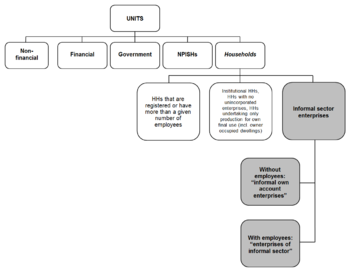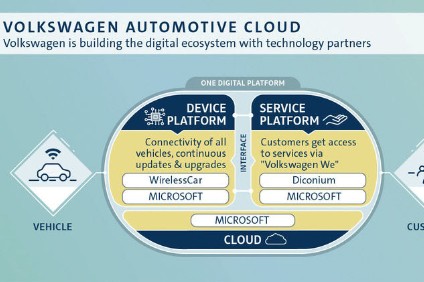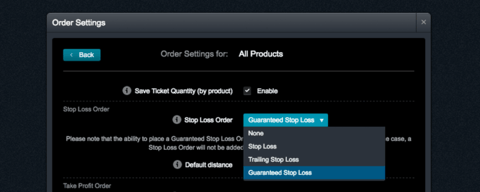What are commercial papers? Online Demat, Trading, and Mutual Fund Investment in India
Contents
The IPA will also report the delay (technical delay-RTGS/NEFT/Market Disruption) in funding the CP Funds Account for redemption on maturity date. All fund based facility availed of from bank and/or financial institutions should be classified as standard asset by the financing banks/institutions at the time of issue. After introduction of the ‘loan system’, the amount of commercial paper is required to be carved out of the ‘cash credit component’ of the WC limit. In view of the further reduction in the ‘cash credit component’, it is decided that the amount of commercial paper that can be issued will not henceforth be restricted to the cash credit component. London-based dealers distribute ECP around the world in contrast to most other major CP markets that are largely focused on domestic issuers and investors. The ECP market is international in terms of issuers, investors and currencies.

Are unsecured quick-term promissory notes with maturity mostly not exceeding 270 days. They are issued by massive corporations to meet short-term obligations. In phrases of dollar quantity, business paper occupies the second position in the money market after Treasury bills. Commercial papers are used typically by large creditworthy firms with unused strains of bank credit score and have a low default threat.
What shall be the maturity period of Commercial Paper?
According to the New Economic Regulations came into effect on May 15, 2001, local public authorities are also authorised to issue CP and Medium Term Notes . CP can be issued as a fixed rate, floating rate or index-linked paper. The Securities Act of 1933 requires that securities offered to the public be registered with the Securities and Exchange Commission . Most commercial papers are issued under Section 3 of the 1933 Act which exempts short-term securities from registration requirements as long as they have certain characteristics. At present, issuers decide on the discount rates of their CPs taking into account the Reuters/Telerate CP reference rate as well as the supply-demand forces prevailing in the market.

When the company immediately offers with the investor, quite than use a securities vendor as an intermediary, the business paper is known as a direct paper. Such corporations announce the present charges of CPs of assorted maturities and traders can then select accordingly. Commercial paper is issued by companies to raise funds generally for a time period up to one year. This market takes the uselessly lying finance in the form of cash to places where it is really needed.
Or the commercial paper is sold to a supplier who sells the paper in the market. Dealers embrace large securities corporations and subsidiaries of financial institution-holding companies. The yield for business paper holders is the annualized share distinction between the worth paid for the paper and the par value utilizing a 360-day yr.
The US commercial paper market originated in the 1960s and experienced a drammatic growth in the second half of the 1990s. As a result, the share of commercial papers in the short-term liabilities of non-financial corporations, in particular, rose from less than 5 per cent at the end of the 60s to around 15 per cent one decade later. However, with CP being an unsecured paper, it was decided to delink the repayment of CP out of the cash credit limits and accordingly, the facility of the stand-by arrangement was abolished effective October 17, 1994. This was to impart a measure of independence to CP as a money market instrument, rating of which would reflect the intrinsic strength of the CP issuer.
The SEC has generally interpreted the current transaction requirements broadly, approving a variety of short-term uses of CP proceeds. Thus CP is sold at a reduction to its maturity worth, and the difference between this maturity worth and the purchase price is the curiosity earned by the investor. The CP day-rely base is 360 days within the US and euro markets, and three hundred and sixty five days within the UK. The issuers also needs to ensure that at the time of issuance of Commercial Paper the rating so obtained is current and has not fallen due for review. Corporates, primary dealers and the All-India Financial Institutions are eligible to issue CP. Prior approval of RBI is required before a company can issue CP in the market.
Which are the conditions to be fulfilled to issue Commercial Paper?
The issuer company needs to obtain the credit rating either from CRISIL, ICRA, CARE, FITCH or any other credit rating agency that may be specified by RBI. CPs are not usually backed by any form of collaterals and are allowed to be issued only by corporate with high quality debt ratings. The issue of CP seeks to by-pass the intermediary role of the banking system. This is the most common form of Commercial Paper and is also known as promissory notes. There are two parties as part of this transaction namely the maker and the payee. The maker is the issuer or the entity drawing the Commercial Paper as a written confirmation of paying the stipulated amount to the payee upon maturity.
However, if it is not feasible to phase out stamp duty, it is proposed that at least we may request the Government to bring down the stamp duty as applicable to non-banks to the level of banks to ensure a level playing field. The lowering of spread in recent period largely reflects the substantial improvement commercial paper are generally issued at a price in liquidity in the economy. However, Prime rate of economic banks in India remained inflexible at 12%. The discounting fee on Commercial papers was in the range of 6.5% to 10% in October 2010. No Collaterals – CPs can be issued with any collateral so very less paperwork and formalities required.
- Like secured debt of a company or any entity, these are Asset-Backed Commercial Papers where the collateral is provided against the short-term debt.
- It was softened to P1 of CRISIL or such equivalent rating by other agencies on April 24, 1990 and further to P2 of CRISIL or its equivalent on May 13, 1992.
- However, disparity continues to exist in that that banks as investors pay only one-fifth of what non-bank entities pay for subscribing to CP.
Rating agencies require evidence of short-term liquidity and generally would not issue a CP rating without it. The highest-rated issuers can maintain liquidity backup of as little as 50 per cent of CP outstanding, but firms with less than a high A1-P1 rating generally have to maintain 100 per cent backup. This roundabout process not only creates delay in searching the bank who could agree to undertake this type of job , direct selling to non-bank entities places additional cost to the CP issuer. Further, there could be a situation whereby a bank could be accused of conniving with the issuers of CP to save on stamp duty.
Benefits of Commercial Paper
It involved extra loss of time for the borrowing corporations in availing the short-time period funds for day-to-day manufacturing activities. Commercial paper is normally sold at a discount from face worth and carries larger interest compensation charges than bonds. CPs are issued by highly rated corporate entities to raise short-term funds for meeting working capital requirements directly from the market instead of borrowing from banks.
Investors benefit through higher returns as compared to other short-term investment options. The amounts sought to be raised under the CP should be within the limits approved by Board of directors of the issuer or within the ceiling stipulated by Credit Rating Agency whichever is lower. A Commercial Paper can be issued on different dates in parts provided that in such case each CP shall have the same maturity date. Every issue of CP, including renewal, shall be treated as a fresh issue.

Please note that your stock broker has to return the credit balance lying with them, within three working days in case you have not done any transaction within last 30 calendar days. Please note that in case of default of a Member, claim for funds and securities, without any transaction on the exchange will not be accepted by the relevant Committee of the Exchange as per the approved norms. The cost of raising short-term funds through commercial papers is quite lower as compared to other options. Placing and trading is open to any authorised credit institution or investment firm. CP is not listed at stock exchange and buy-back is possible by issuers. CP must have a fixed maturity date, an initial maturity of at lest one day and upto one year and a unit value equivalent to at least EUR 150,000.
Join Taxguru’s Network for Latest updates on Income Tax, GST, Company Law, Corporate Laws and other related subjects.
This is because CPs are used as funding tool and as a cash management tool. Many issuers continuously roll over their CP, financing a more-or-less constant amount of their assets using CP. Since it’s not backed by collateral, solely firms with excellent credit rankings from a acknowledged credit rating agency will be able to sell their commercial paper at a reasonable price. It may be issued by way of a dealer or directly placed to an institutional investor.
What is Commercial Paper?
However, considering the present situation, it is proposed that minimum maturity period of CP could be reduced from 15 days to 7 days. Essentially the notes are issued to provide working capital, as a result of the receipt of cash flows from taxation and different native government sources is irregular. The typical maturity of a notice https://1investing.in/ is three months, whereas the longest maturity is 12 months. In most instances tax-exempt notes are issued with credit backing within the type of a financial institution letter of credit, a bond insurance coverage or a lending line at a financial institution. Businesses concern commercial paper in the form of a promissory notice.


No Comments